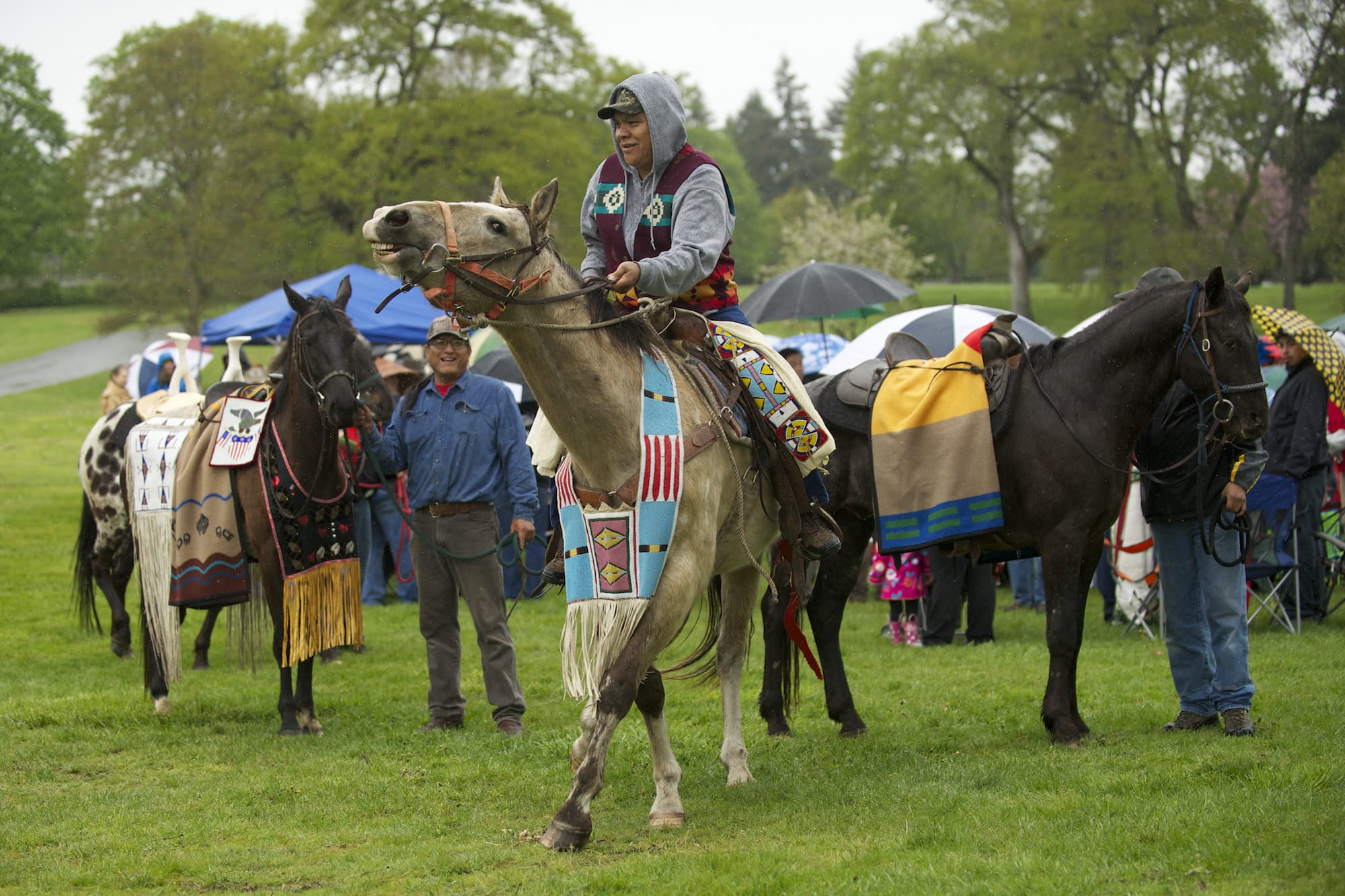More than 130 years ago, the young son of Little Bear died while in captivity at Fort Vancouver.
On a rainy Saturday, members of the Nez Perce tribe, many with small children of their own, gathered at the Fort Vancouver National Site to remember what happened to Chief Redheart’s band during the Nez Perce War.
Lindsay Groskopf, 33, an enrolled member of the Nez Perce and a Vancouver resident, braved the elements with her toddler, to participate in the 17th annual Chief Redheart memorial ceremony. Groskopf said her father taught her a lot about her culture and heritage and she hopes to do the same for her small child. The memorial service is meant to serve as a reminder of the events, but also, as one elder at the service said, to heal.
“These events bring awareness,” Groskopf said. “What happened at Fort Vancouver wasn’t in the history books when I went to school.”
During the Nez Perce War of 1877, members of Chief Redheart’s band, who were not involved in the fighting and were planning on heading home, were captured and held prisoner at Fort Vancouver from 1877 to 1878. While in prison, the unnamed 2-year-old boy died.
Vancouver Mayor Pro Tem Larry Smith read from a proclamation during the ceremony, “Whereas the Nez Perce show their esteem for their ancestors and preserve and honor their cultural heritage with traditional memorial ceremonies at locations of significance in their history; and whereas it is very important for the young tribal members to learn from and honor their ancestors … .”
The ceremony marks the day when Chief Redheart and his people were released from captivity. There was ceremonial singing, a ritual known as the riderless horse (empty saddle) ceremony, and sacred pipe ceremony.
Samantha Redheart, 34, traveled from Harrah, in the Yakima Valley, with her two young nephews and her son. She is a direct descendant of Chief Redheart. She said it was important her son learn to honor the elders in their community and those who died before them.
“This is our heritage; it’s where we come from,” she said.
Her son, Kupkana Redheart, who is 10, said he was “proud” to know he was related to Chief Redheart.
Jake Whiteplume, also a member of the Nez Perce tribe, said although it was a time for people to remember, it was also important that “non Indians come to understand our people.”




